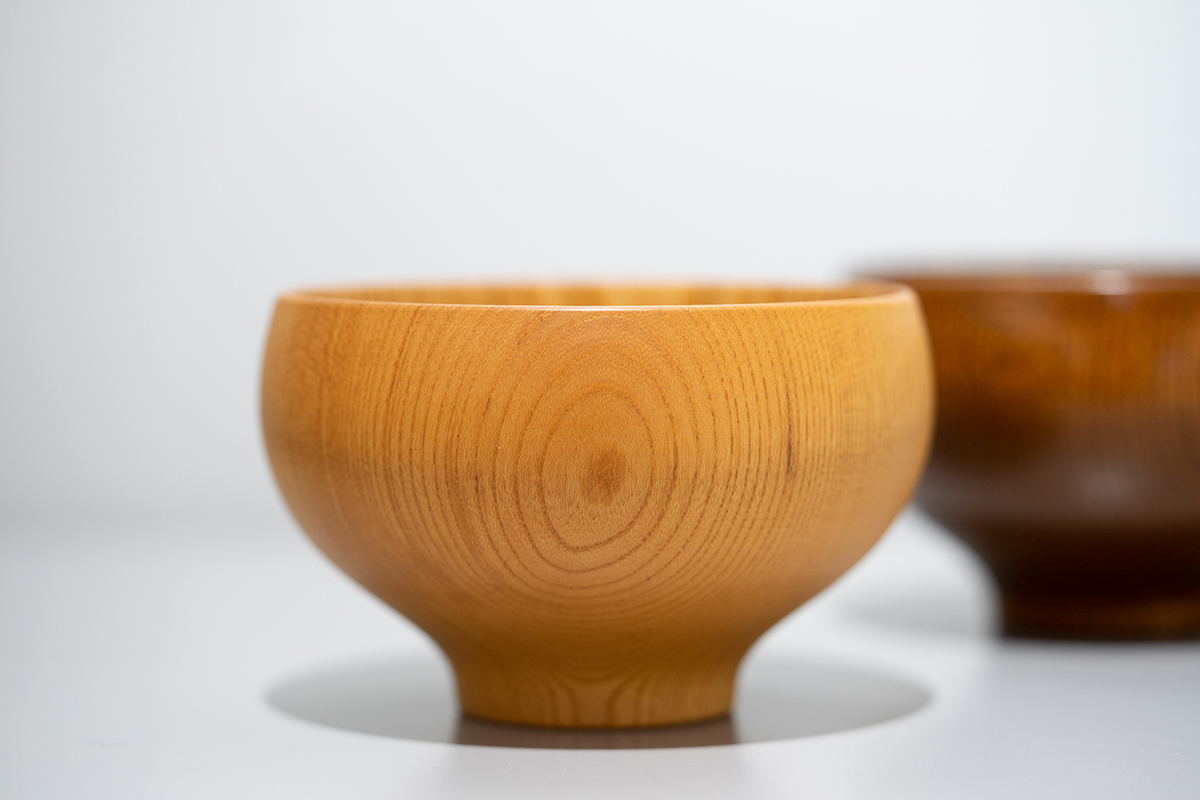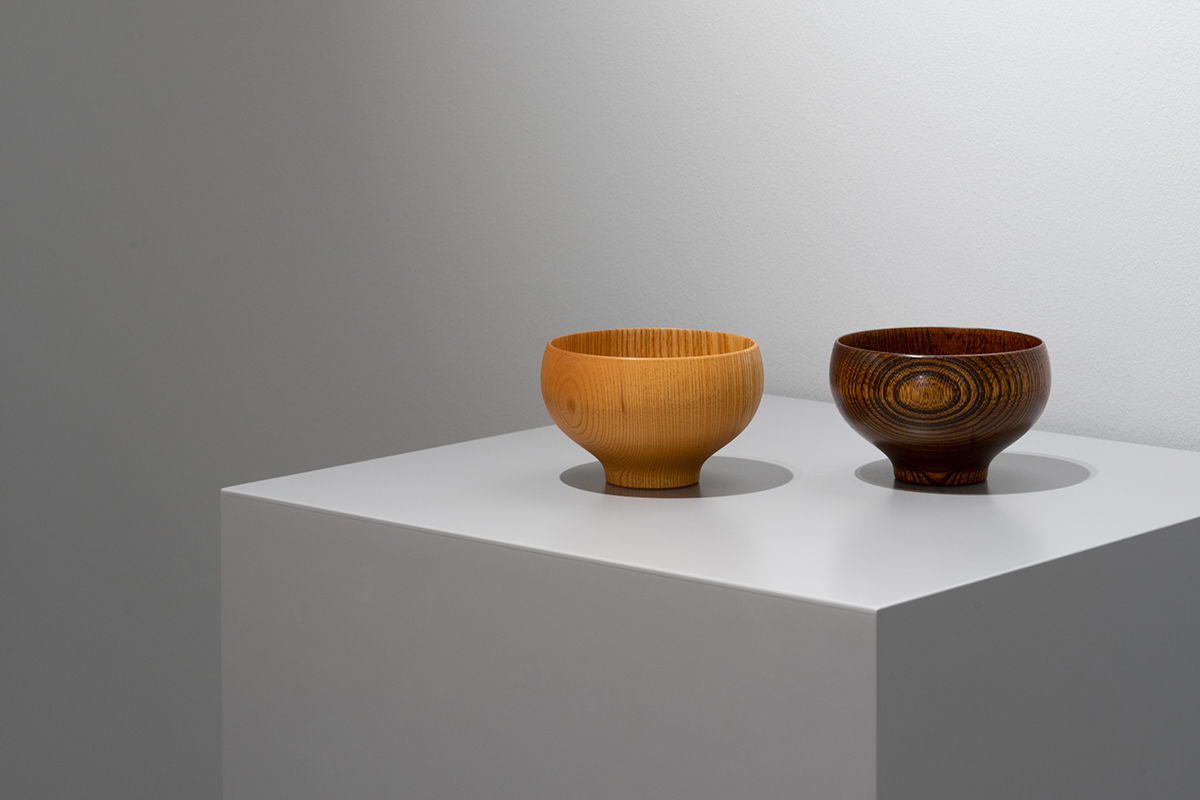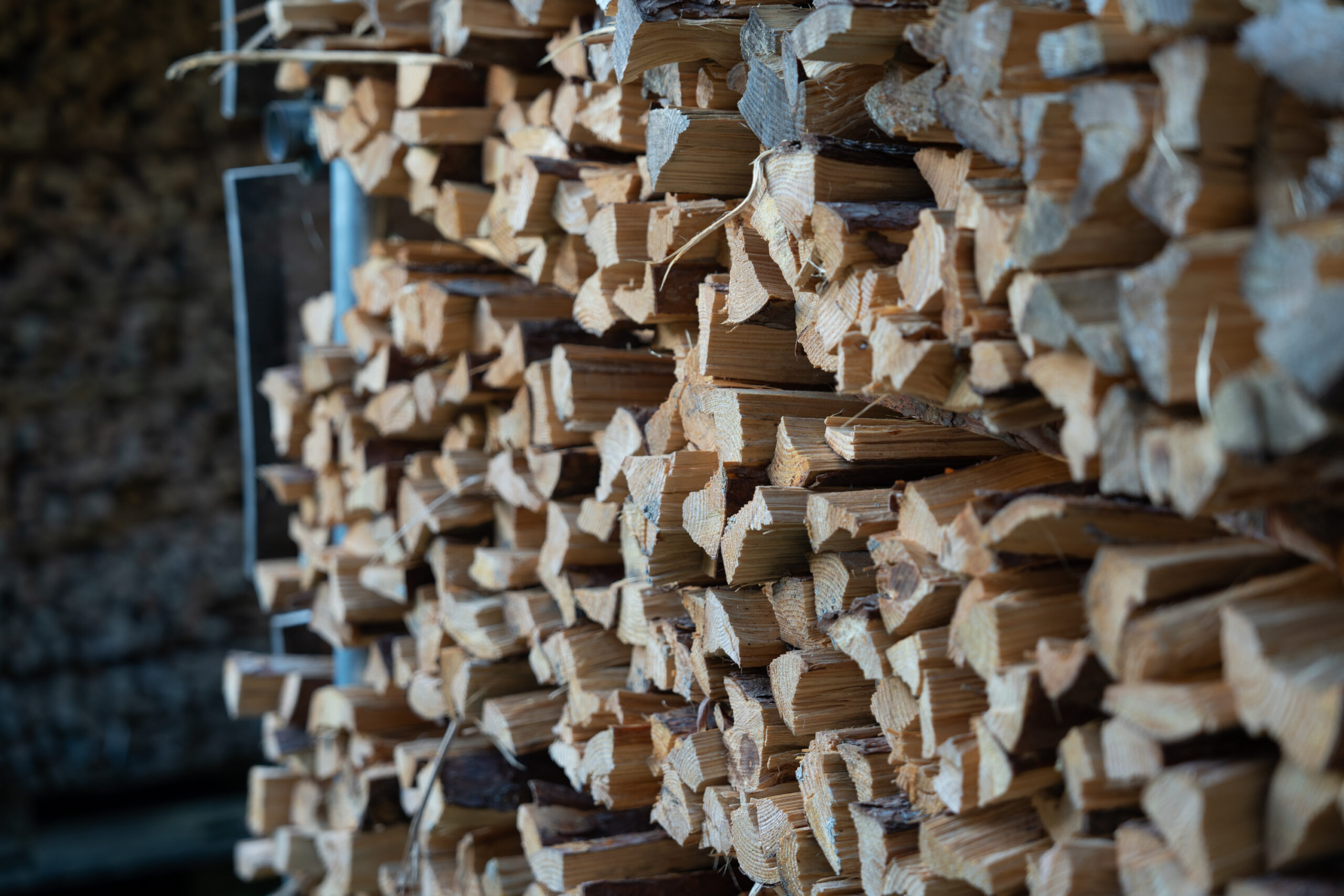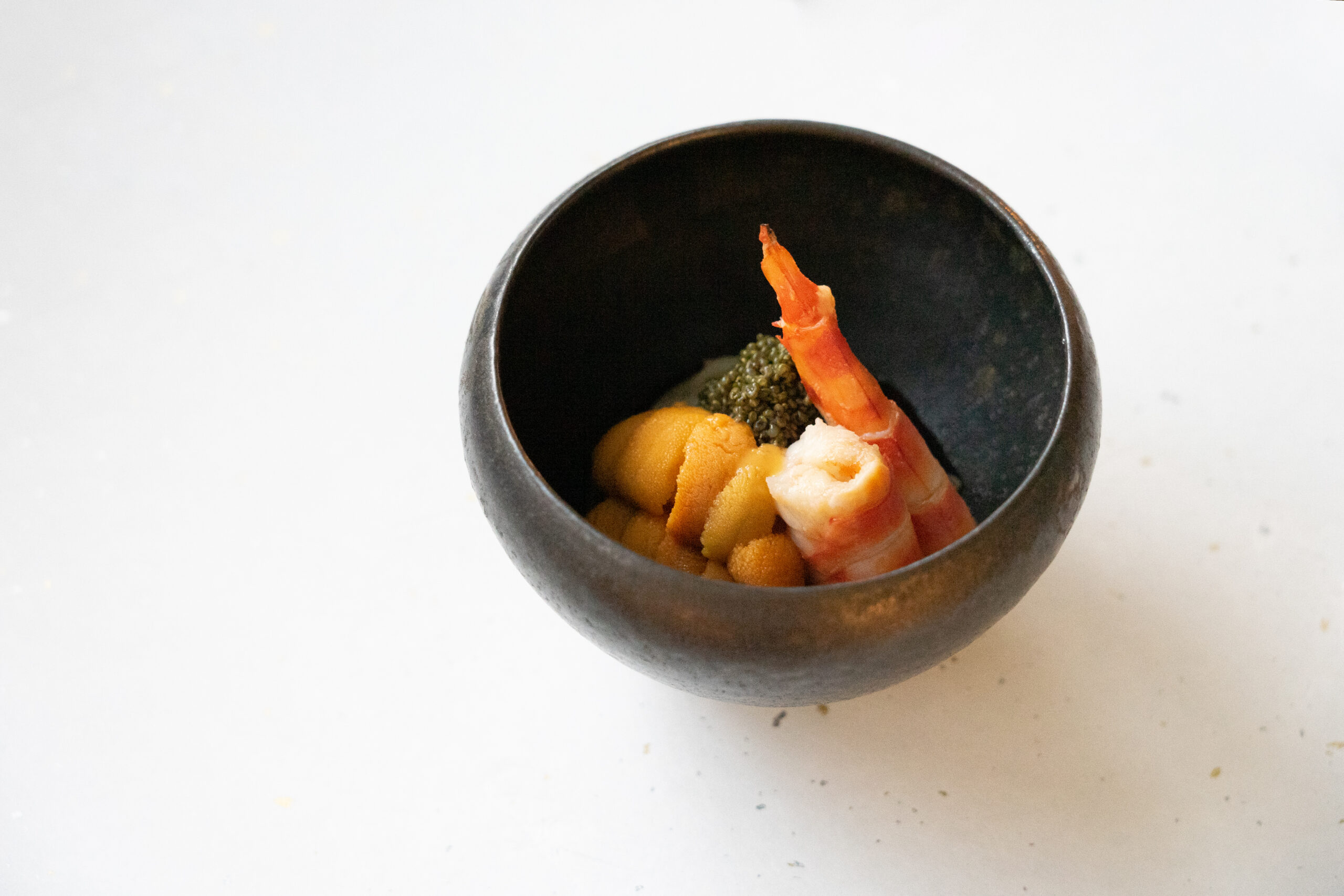When I think of “kijibiki (woodturning)”, it is Yamanaka Onsen in Ishikawa Prefecture that first comes to mind. Kijibiki, a technique to curve round vessels using turning tools similar to chisels on wood blocks spinning on a lathe, is the best method for making circular bowls. Watching craftsmen shape wood with a loud high pitched “keeeeeen” sound sure is impressive and enthralling. Lacquerware in Ishikawa prefecture is often characterised as “Yamanaka for kiji (wooden base), Wajima for nuri (lacquering) and Kanazawa for makie (artistic decoration with sprinkled metal powder, such as gold and silver).” The kiji (wooden bases) created in Yamanaka are used not only for Yamanaka lacquerware, but are also supplied to Wajima, Kyoto and various others places around Japan.
The most distinctive feature of Yamanaka lacquerware is its use of a technique called “tategi dori,” which is a way of sawing lumber following the direction of the grain. There are two ways of cutting out usable material from trees, one vertical (tategi) and other horizontal (yokogi). To produce the vertical cut, round slices are first cut out from the tree trunk across the grain, and then what will become the bowls are cut out vertically in line with the grain; whereas in the horizontal cut, flat boards are cut out vertically along the trunk, and then the bowls are cut from those perpendicular to the grain. Horizontal cutting is more productive in terms of extracting the most material from a given tree, but has lower strength. The vertical cutting, on the other hand, because it cuts along with instead of against the direction of tree growth, experiences fewer deformations and thus is stronger and better able to take thin and delicate carving. Using such vertical cutting, Yamanaka artisans are able to produce very fine, elaborate carvings and to specialise in creating patterns and fine decoration. Yamanaka’s technique, called “kashokubiki (decorative curving)” is said to be the best in Japan, and uses dozens of specific techniques. One of them is called “sensuji,” which literally means “thousand lines.” In sensuji, the artisan grinds narrow grooves of very precise width one by one without any measurement apart for their intuition built up over many years of experience. Anytime I watch them do this, I cannot hide my amazement.
For wooden vessels crafted in this way, much of the deep pleasure and beauty of using them comes from enjoying the texture and grain of wood. At HULS Gallery we show customers all the stock we have so that they can pick the piece which has their favorite pattern of grains. This is a very important time for us to let our customers see and feel and experience the wide variety of individual ‘faces’ that grow out from different grain patterns. By seeing these differences in grains, we hope they can feel more deeply the richness of nature, and that from this they will feel a special attachment to the one they selected from among all the others.
In Japanese food culture, soups such as miso soup and clear soup are essential, and soup bowls play a very important role in Japanese cuisine. In addition, because Japanese soup is usually eaten from a bowl lifted up and held in the hands (unlike in western cultures, where people eat with spoons), the bowls must fit well in the hand. I like the way it feels to touch ceramics, but the warmth that I feel in my hands through a wooden bowl when I eat soup is something else. It seems even to reach out to and warm up my heart. The enjoyment of seeing the wooden grain of a handmade bowl, picking it up to feel its texture, and enjoying warm soup from it; one can experience these pleasures most deeply from the wooden bowls created by Japan’s woodturning artisans.
Text: Yusuke Shibata
Work: “MATEVARI” / Gato Mikio




